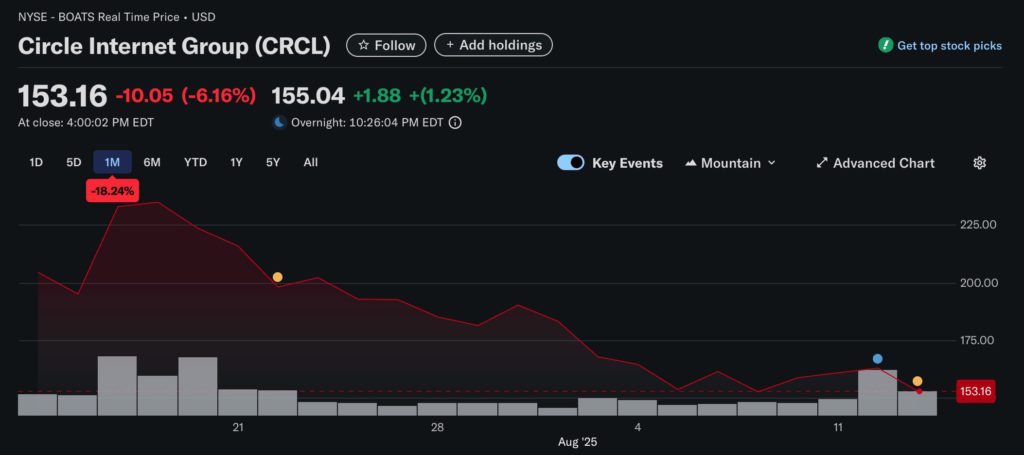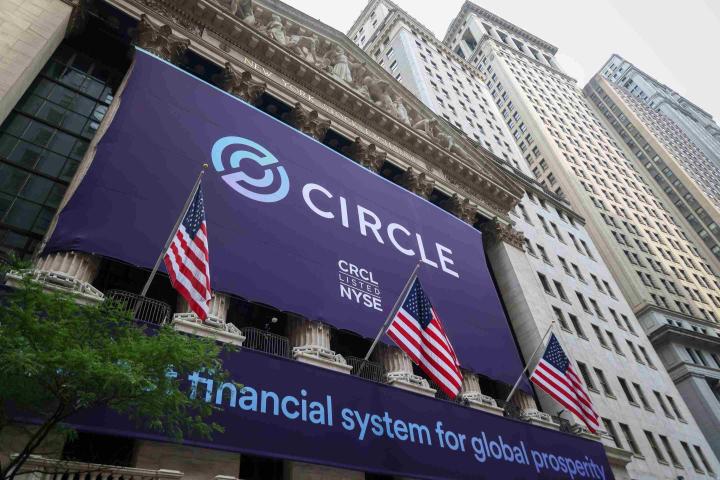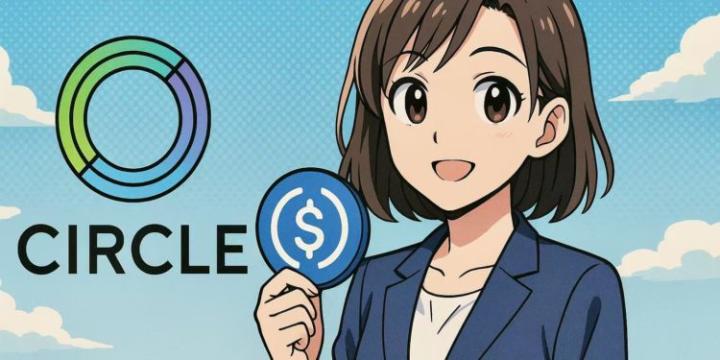US dollar stablecoin USDC issuer Circle released its financial report on August 12. The report shows that Circle's USDC circulation grew by 90% year-on-year, reaching $65.2 billion on August 10. Meanwhile, Circle's total revenue also increased by 53% to $658 million, exceeding market expectations; adjusted EBITDA grew by 52% to $126 million.
However, due to non-cash expenses related to IPO, Circle reported a net loss of $482 million. Most of this came from $424 million in stock compensation expenses. Despite the losses, Circle still expects USDC circulation to maintain a 40% compound annual growth rate, with other revenues estimated to reach $75-85 million.
Analyst: Rate Cut Will Be a Fatal Blow
However, Dragonfly Capital investor Omar warned on X last night that if the Federal Reserve initiates rate cuts in the coming months, the impact on Circle, which heavily relies on interest income, would be "quite terrible".
Currently, 97-99% of Circle's revenue comes from interest generated by USDC reserves. These massive reserves are primarily invested in short-term US Treasury bonds, with yields closely tied to the federal funds rate. Based on public financial reports, Omar calculated that if the Federal Reserve cuts rates by 100 basis points (1%), Circle's annual revenue would decrease by approximately $618 million (-23%), gross profit would drop by $303 million (-30%), and gross profit margin would simultaneously decline by 3.3 percentage points.
For a company with almost a single income source, this is not just a slowdown in growth, but a removal of its profit foundation.
Double Squeeze of Valuation and Cash Flow
Supported by high interest rates, Circle's stock price reached a historical high of $260 in late June, but has been continuously declining, closing at $153.16 on the 13th, down 18.24% in the past month.
If the Federal Reserve truly reduces rates and profits shrink, Circle's stock price will face even greater pressure. The recent outflow of $1.5 billion in private placement is interpreted as investors cashing out before valuation contracts.

Hard Battle of Expanding Supply
Theoretically, increasing USDC circulation can "compensate by volume". Models show that to offset a 1 percentage point rate cut, Circle needs to issue approximately $19.3 billion in USDC on top of its current $61 billion, an increase of over 30%. However, rapidly issuing nearly $20 billion requires simultaneously increasing user demand, managing redemption risks, and ensuring reserve assets are immediately in place - a significant challenge.
More realistically, there are distribution costs. Circle must share about 54-55% of reserve income with its primary partner Coinbase, with distribution fees accounting for nearly 60% of total revenue in 2024. As reserve income shrinks, this "commission" will not decrease proportionally, causing most of the gross profit from new supply expansion to be absorbed, reducing the strategy's sweetness and increasing its bitterness.
Diversifying Development to Expand Financial Sources
Of course, Circle understands the risks of a single revenue model and has recently shifted focus to fee-driven services. Products like Circle Payments Network (CPN) and the upcoming Circle Chain aim to enter payment settlement and on-chain services to collect transaction fees.
However, the closer the rate cut timing, the less buffer time Circle has. If new products fail to quickly scale up and USDC supply is limited by market demand, cash flow and valuation may simultaneously decline, testing investors' patience. The interplay between macroeconomic policies and financial technology awaits market validation.






